Aug 31, 2021
Eco-Friendly Cutlery Sourcing Guide: How to Choose the Right Alternative for Plastic Cutlery?
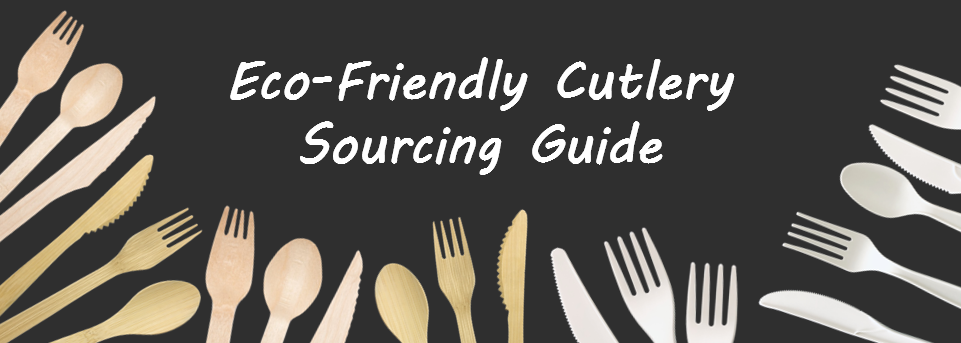
Nowadays, plastic pollution has impacted and jeopardized countless marine species and habitats. This hot topic has set off a huge upsurge of plastic bans across the world. European Parliament has already sealed a ban on single-use plastics by 2021, including disposable plastic cutlery. Are you ready for the plastic ban? How to choose the right eco-friendly alternative for plastic cutlery? What options do we have?
When choosing the appropriate type of sustainable alternative to replace plastic cutlery, there are a lot of different materials available. These materials have different characteristics that may affect user experience and lead to a huge disparity in prices.
Here are 4 types of sustainable materials used for eco-friendly cutlery/utensils.
Disposable Wooden Cutlery
Disposable wooden cutlery is made from 100% natural premium birchwood. Wood has long existed in the natural environment. Even if being discard after use, disposable wooden cutlery is considered a pollute to the natural environment.
Unlike plastic cutlery, disposable wooden cutlery only needs about 60-90 days to be biodegraded in a natural environment. Its biodegradation end products are water, carbon dioxide, and toxic-free biomass that can be used to support plant growth. As long as the wood is from responsibly sourced forests, disposable wooden cutlery is an eco-friendly alternative to disposable plastic cutlery.
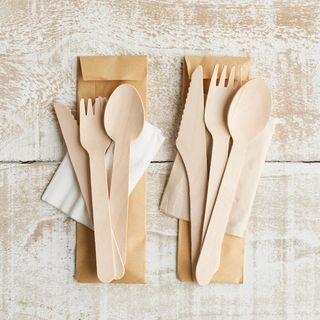
- Product Features
- Made from FSC Certified Birch Wood
- Wood from Sustainably Sourced Forest
- 100% Biodegradable & Compostable
- FDA & EU Approved for Food Contact Safe
- Unique Natural Texture & Elegant Look
- Strong & Sturdy, Not Easy to Beak
- Waxed Cutlery Option Available
- Custom Design/Print Available
Check our Disposable Wooden Cutlery Range »
Disposable Bamboo Cutlery
Bamboo is a non-food renewable resource, yielding new harvests quarterly. It is one of the fastest-growing plants on the planet. Bamboo is a highly sustainable raw material that is also 100% compostable & biodegradable. Bamboo is considered an ideal TREE-FREE, SUSTAINABLE & RENEWABLE material for eco-friendly disposable tableware.
Bamboo cutlery is very sturdy and ideal for tougher and heavier food such as meats. The main disadvantage of disposable bamboo cutlery is that it could be a very costly eco-friendly alternative for single-use plastic cutlery.
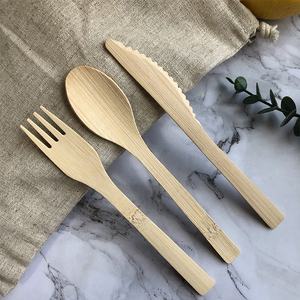
- Product Features
- 100% Natural, Tree-Free
- 100% Compostable & Biodegradable
- Suitable for Both Industrial Compost & Backyard Compost
- Made from Sustainable, Renewable Resource
- BPA-Free, Plastic-Free
- Food Contact Safe
- Cold & Hot Food Friendly
- Strong & Sturdy
- Eco-friendly Alternative for Plastic Disposables
Check our Disposable Bamboo Cutlery range »
CPLA Cutlery
CPLA Cutlery is made from the plant-based bioplastic material PLA. Polylactic acid is derived from sugarcane, corn, sugar beets, wheat, and other plant-based sustainable resources. PLA is annually renewable and certified compostable & biodegradable. CPLA cutlery looks and feels like traditional petroleum-based plastic cutlery, and it can perform just as well in most food scenarios. CPLA cutlery is cold & hot food-friendly. It can resist high temperatures up to 90C/185F.
CPLA cutlery can be composted in industrial composting facilities within 180 days. Its end products are water, carbon dioxide, and toxic-free biomass. However, it’s not certified Home Compostable. It means that CPLA cutlery is not suitable for backyard composting.
Industrial composting can provide the optimal composting conditions(suitable humidity, temperature, microorganism, etc.) for CPLA cutlery so that it can be composted within the specified time frame. The composting conditions of backyard composting may vary differently. It cannot guarantee the composting conditions required for CPLA cutlery.
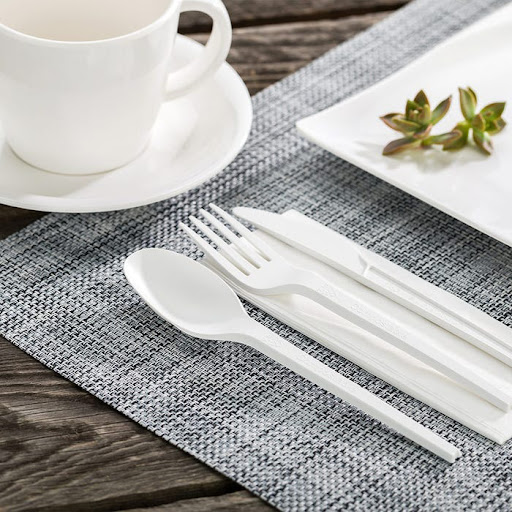
- Product Features
- BPA-Free, Plastic-Free
- Made from Renewable Natural Resources
- 100% Compostable & Biodegradable
- Strong & Sturdy, Sleek & Stylish
- Heat Resistance Up To 90C/194F
- Cold & Hot Food Friendly
- Ideal for Most of the Food Scenarios
- Composted in Industrial Composting Facility In 180 Days
- Not Suitable for Home Compost / Backyard Compost
- Could be A Costly Eco-Friendly Alternative
- Custom Design, Colors & Embossment Available
Corn Starch / PSM Cutlery
Corn Starch cutlery / PSM cutlery is made of a hybrid material of renewable plant starch and plastic filler. PSM is NOT COMPOSTABLE. Corn Starch / Plant Starch Material replaces some of the finite resources(petroleum) with annually renewable plant starches, making it a much more sustainable choice for your disposable cutlery.
Unlike traditional plastic, Corn Starch / PSM can also be disposed of through incineration, resulting in non-toxic smoke and a white residue that can be used as fertilizer. The industrial composting facility may not be available in every area. For people who try to reduce petroleum-based single-use plastic cutlery, PSM could be an eco-friendly & cost-effective alternative.
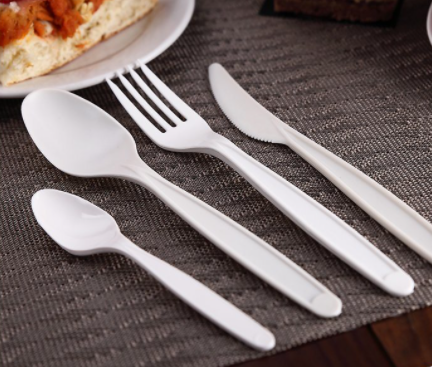
- Product Features
- Strong & Sturdy, Sleek & Stylish
- Heat Resistant Up to 105°C / 220°F
- Cold & Hot Food Friendly
- Partly Made with Renewable Resources
- Reduce Energy Consumption & Carbon Footprint
- Biodegradable, End of Life Options: Incineration & Landfill
- Custom Design, Colors & Embossement Available
Eco-friendly Cutlery Benefits Comparisons
Plastic cutlery offers excellent product performance for user experience. Some of these eco-friendly materials will not work as well as plastic cutlery due to their limitations in material characteristics. Some are not recommended for heavy foods.
Here is a spreadsheet of comparisons of the benefits select materials have over others:

Sourcing Guide for Eco-Friendly Cutlery:
1) Decide if compostable cutlery is a must
Difference countries and regions may have different legislation & regulations when it comes to single-use plastic ban. Check with your local authority to find out if disposable tableware used needs to be compostable.
For example, the EU single-use plastic ban that came into effect on July 3rd, 2021 has included all plastics that have been chemically modified(including biobased, biodegradable plastics)into the board definition of "plastic". It means that bioplastic cutlery is not allowed in the European law frame. However, there is an exception in Italian legislation - the Italian transition law introduced the opening to disposable articles in compostable plastic certified conforming to the standard where the use of reusable alternatives to single-use plastic products is not possible.
Besides, check if there is any composting facility in your local or market area. Some of the eco-friendly alternative, such as CPLA cutlery requires an industrial composting facility for the composting.
2) Determine your budget/target price range
Different eco-friendly alternatives might have a huge disparity in prices. It’s important to determine your budget in order to choose the most suitable green alternative for single-use disposables. The budget does not necessarily equal the target price, but it will enable the supplier to have a rough idea of your budget and recommend the possibly right alternative accordingly for you.
3) Take into consideration the food types served
Plastic cutlery offers excellent product performance for user experience. Some of these eco-friendly materials will not work as well as plastic cutlery due to their limitations in material characteristics.
CPLA cutlery has excellent product performance very similar to that of plastic cutlery. It can handle most of the food scenarios.
For example, paper cutlery and sugarcane cutlery are not recommended for heavy foods and hot foods. They’re more suitable for light foods such as salads and snacks.
Disposable wooden spoons and disposable bamboo spoons have shallow spoon cavities due to material limitations. They might not be suitable for soup.
4) Try to imagine what feeling and atmosphere you'd like to convey to your customers
If you want your brand image associated with sustainable, natural, eco-friendly connotations, tree-free renewable materials like bamboo might be the best choice. If eco-friendly and natural are the main emphasis, wood & bamboo could be good options. Their unique texture can bring a natural connotation and present a positive product/brand image to your customers.
Heavyweight flatware has a greater density. The heavier feel can give your customers a greater sense of quality and value.
If you need any professional advice from us, please feel free to contact us at:[email protected]. We’re here to help!
